It’s something of a relief knowing that this year, finally, is poised to become a memory, consigned to history. But before it does, here’s the second part of my 40 Best Albums of 2020, each of which has wonderfully demonstrated that this year has had a lot more going for it than just viral onslaughts, infantile political bickerings and endless cycles of lockdowns. Rising high above all the shit and the shenanigans are these: the best of the best of 2020.
20 | Joeri Chipsvingers – De Advonturen van Joeri Chipsvingers
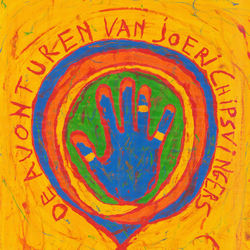 “Track titles like ‘Labiel Trutje’ (unstable bitch) and ‘Spitante Raveteef’ (outspoken woman attending a house party) give some indication of the tone that pervades De Avonturen van Joeri Chipsvingers. The former track is unsurprisingly erratic, though it veers more towards restraint, focusing on nervy, hopping, out-of-sync staccatos that occasionally lurch into streams of rapid runs. The latter starts in similarly reserved, almost cautious fashion, with a bassoon taking the spotlight, but it soon enters its main sequence, a weirdly uncomfortable tutti where the instruments all seem to be wanting to work together but the result is straggly and eccentric, permanently off-balance; even when it gets the minimalistic momentum going there’s something strangely ponderous about it, like someone dancing under duress. […] ‘Joeri Chipsvingers en het Lays Lament’ occupies a more nocturnal soundworld, where notes hang and gently undulate in the air, sounding like gossamer sirens. Here, though, the dichotomous aspect of the album manifests primarily as a tension between energy and relaxation (or maybe resignation), resulting in ambivalent music prone to a kind of introspective melancholy, which is ultimately channelled into a solemn, communal hymn. […] i’ve been reflecting lately about how much music i’ve been listening to lately is either stultifyingly polite or just boringly vague. De Avonturen van Joeri Chipsvingers is neither, it’s a leftfield excursion into a by turns silly, solemn and surreal cavalcade of ideas that manages to be both touching and outrageous.” (reviewed in November) [CD/Vinyl/Digital]
“Track titles like ‘Labiel Trutje’ (unstable bitch) and ‘Spitante Raveteef’ (outspoken woman attending a house party) give some indication of the tone that pervades De Avonturen van Joeri Chipsvingers. The former track is unsurprisingly erratic, though it veers more towards restraint, focusing on nervy, hopping, out-of-sync staccatos that occasionally lurch into streams of rapid runs. The latter starts in similarly reserved, almost cautious fashion, with a bassoon taking the spotlight, but it soon enters its main sequence, a weirdly uncomfortable tutti where the instruments all seem to be wanting to work together but the result is straggly and eccentric, permanently off-balance; even when it gets the minimalistic momentum going there’s something strangely ponderous about it, like someone dancing under duress. […] ‘Joeri Chipsvingers en het Lays Lament’ occupies a more nocturnal soundworld, where notes hang and gently undulate in the air, sounding like gossamer sirens. Here, though, the dichotomous aspect of the album manifests primarily as a tension between energy and relaxation (or maybe resignation), resulting in ambivalent music prone to a kind of introspective melancholy, which is ultimately channelled into a solemn, communal hymn. […] i’ve been reflecting lately about how much music i’ve been listening to lately is either stultifyingly polite or just boringly vague. De Avonturen van Joeri Chipsvingers is neither, it’s a leftfield excursion into a by turns silly, solemn and surreal cavalcade of ideas that manages to be both touching and outrageous.” (reviewed in November) [CD/Vinyl/Digital]
19 | Olga Neuwirth – …miramondo multiplo…
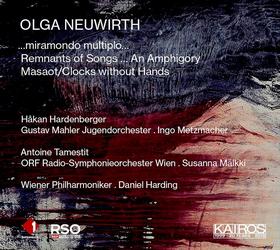 “The multiple strains, glimpses and half-echoes of earlier music [in viola concerto Remnants of Songs … an Amphigory] are a communal impulse, one that, while the viola acts as a figurehead for it, is nonetheless embedded in the behaviour of the orchestra. For me, the second and fourth movements still remain the work’s most compelling sections, the former featuring delicious accompanying sequences where the soloist is distantly surrounded by a network of falling gossamer threads, the latter moving from a dance-like opening into a passionate demonstration of dual interaction, the orchestra letting out emphatic accents that punctuate and reinforce the viola’s ongoing melodic train of thought. […] Much the same can be said for …miramondo multiplo… […], particularly the robust relationship between the trumpet and orchestra. As with Remnants, i often found myself paying attention to the periphery, and to the wondrously varied contexts Neuwirth creates for the ‘action’ going on in the foreground. […] Here too, the emphasis is lyrical, passing through a welter of contrasting attitudes: motoric, jazzy, soft, strident – with echoes of earlier musics again rearing their head from time to time with varying degrees of clarity. Both works have an irresistibility to them, but it’s the final work on the disc, the 25-minute orchestral piece Masaot / Clocks without Hands, that’s arguably the most outstanding. […] the close of the work is as unmissable as it is unforgettable, the music dissolving into what sounds like rising bubbles that transform into an upward cascade like a waterfall in reverse.” (reviewed in May) [CD/Digital]
“The multiple strains, glimpses and half-echoes of earlier music [in viola concerto Remnants of Songs … an Amphigory] are a communal impulse, one that, while the viola acts as a figurehead for it, is nonetheless embedded in the behaviour of the orchestra. For me, the second and fourth movements still remain the work’s most compelling sections, the former featuring delicious accompanying sequences where the soloist is distantly surrounded by a network of falling gossamer threads, the latter moving from a dance-like opening into a passionate demonstration of dual interaction, the orchestra letting out emphatic accents that punctuate and reinforce the viola’s ongoing melodic train of thought. […] Much the same can be said for …miramondo multiplo… […], particularly the robust relationship between the trumpet and orchestra. As with Remnants, i often found myself paying attention to the periphery, and to the wondrously varied contexts Neuwirth creates for the ‘action’ going on in the foreground. […] Here too, the emphasis is lyrical, passing through a welter of contrasting attitudes: motoric, jazzy, soft, strident – with echoes of earlier musics again rearing their head from time to time with varying degrees of clarity. Both works have an irresistibility to them, but it’s the final work on the disc, the 25-minute orchestral piece Masaot / Clocks without Hands, that’s arguably the most outstanding. […] the close of the work is as unmissable as it is unforgettable, the music dissolving into what sounds like rising bubbles that transform into an upward cascade like a waterfall in reverse.” (reviewed in May) [CD/Digital]
18 | Andrew Leslie Hooker & Nick Janczak – Black Earth / Red Earth
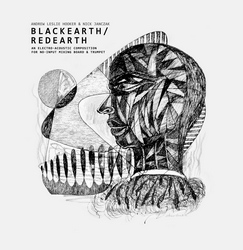 “While its palette is relatively well-defined […], the wealth of its details and the way they appear, evolve, develop and / or vanish is endlessly fascinating. There are episodes when pitch predominates, becoming a spine or a foundation for less significant, transitory things happening around or above them. Equally there are episodes when pitch is practically lost as a concept, becoming a texture comprising a welter of pops, burps, squelches and squeals, some of them appearing to bounce and ping pong between the speakers. But most often, these polar ideas mingle, and it’s the balance of them that proves to be one of the most engrossing aspects of Black Earth / Red Earth. They push and pull against each other; one moment we think an idea is going to blossom, but it yields to a network of gentle abrasion, or the plethora of impacts that threaten to take over everything finds itself swept aside due to the soft laser power of dronal pitches. This micro-balance is matched by a macro-balance whereby the piece oscillates between longer periods of activity and repose, over time strengthening that underlying sense of a largely static mode of behaviour. And on both the large and small scales, all the while it poses the question […] regarding to what extent discrete elements and ideas are reacting to, ignoring or existing entirely obliviously to one another. Not only is it impossible to tell, but each successive listen suggests new possibilities of perhaps spurious connection. i think it’s this, above all else, that makes Black Earth / Red Earth such an immersive, mesmeric and – time and time again – rewarding listening experience.” (reviewed in October) [Digital]
“While its palette is relatively well-defined […], the wealth of its details and the way they appear, evolve, develop and / or vanish is endlessly fascinating. There are episodes when pitch predominates, becoming a spine or a foundation for less significant, transitory things happening around or above them. Equally there are episodes when pitch is practically lost as a concept, becoming a texture comprising a welter of pops, burps, squelches and squeals, some of them appearing to bounce and ping pong between the speakers. But most often, these polar ideas mingle, and it’s the balance of them that proves to be one of the most engrossing aspects of Black Earth / Red Earth. They push and pull against each other; one moment we think an idea is going to blossom, but it yields to a network of gentle abrasion, or the plethora of impacts that threaten to take over everything finds itself swept aside due to the soft laser power of dronal pitches. This micro-balance is matched by a macro-balance whereby the piece oscillates between longer periods of activity and repose, over time strengthening that underlying sense of a largely static mode of behaviour. And on both the large and small scales, all the while it poses the question […] regarding to what extent discrete elements and ideas are reacting to, ignoring or existing entirely obliviously to one another. Not only is it impossible to tell, but each successive listen suggests new possibilities of perhaps spurious connection. i think it’s this, above all else, that makes Black Earth / Red Earth such an immersive, mesmeric and – time and time again – rewarding listening experience.” (reviewed in October) [Digital]
17 | The Bug ft. Dis Fig – In Blue
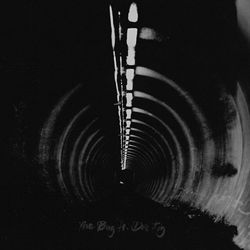 “Each of its dozen tracks becomes a self-contained, all-enclosing world. These worlds are constructed from the most rudimentary of sonic building blocks: beats, bass, voice, to the extent that they don’t so much sound like archetypes but prototypes, fundamental and primordial, their obvious modernity coloured by an impossible sense of the archaic. […] These individual worlds sit within the bigger universe that is In Blue, each track bleeding and blurring into the next, the brief moments of pause between them feeling […] like yawning, aching lacunae, abject emptinesses desperate to be filled. The tracks ring out as variations on the same basic theme: shuffling rhythms at the centre, underpinned by buzzing, throbbing, athletic basslines emerging from abyssal depths, crowned by ethereal, even angelic vocals drifting from empyreal heights. On occasions, such as in ‘Take’ and above all ‘Forever’, the bass originates from a place so low that it becomes a kind of liquified tectonic plate on which everything is formed. […] In the aptly-named ‘Destroy Me’, Dis Fig’s sublime voice turns into sharp shards of reverberance hissing all around. Here and elsewhere she becomes a siren-like figure: though often not so much singing as whispering, and despite at times sounding distant and hard to make out, she nonetheless sits as a point of mesmeric stability and focus within these massively shifting and vibrating environments. […] In Blue is magical, mysterious, marvellous and majestic – and quite apart from being one of the best things i’ve heard all year, it’s easily the album that i’ve been compelled to play the loudest. Ditch the headphones; let it flood the space.” (reviewed in December) [CD/Vinyl/Cassette/Digital]
“Each of its dozen tracks becomes a self-contained, all-enclosing world. These worlds are constructed from the most rudimentary of sonic building blocks: beats, bass, voice, to the extent that they don’t so much sound like archetypes but prototypes, fundamental and primordial, their obvious modernity coloured by an impossible sense of the archaic. […] These individual worlds sit within the bigger universe that is In Blue, each track bleeding and blurring into the next, the brief moments of pause between them feeling […] like yawning, aching lacunae, abject emptinesses desperate to be filled. The tracks ring out as variations on the same basic theme: shuffling rhythms at the centre, underpinned by buzzing, throbbing, athletic basslines emerging from abyssal depths, crowned by ethereal, even angelic vocals drifting from empyreal heights. On occasions, such as in ‘Take’ and above all ‘Forever’, the bass originates from a place so low that it becomes a kind of liquified tectonic plate on which everything is formed. […] In the aptly-named ‘Destroy Me’, Dis Fig’s sublime voice turns into sharp shards of reverberance hissing all around. Here and elsewhere she becomes a siren-like figure: though often not so much singing as whispering, and despite at times sounding distant and hard to make out, she nonetheless sits as a point of mesmeric stability and focus within these massively shifting and vibrating environments. […] In Blue is magical, mysterious, marvellous and majestic – and quite apart from being one of the best things i’ve heard all year, it’s easily the album that i’ve been compelled to play the loudest. Ditch the headphones; let it flood the space.” (reviewed in December) [CD/Vinyl/Cassette/Digital]
16 | Chris Watson / Georgia Rodgers – Notes from the Forest Floor / Line of Parts
 “At first hearing Georgia Rodgers’ Line of Parts seems to be a simple diptych, and one where the two sections are extremely different from each other. Yet what seems to connect them is a concern with the way in which timbrally similar elements can interact to create new sonic forms and shapes. The first part focuses on impacts of raindrops falling onto metal, a simple, familiar sound but one where, over time, the timbral and dynamic differences become more and more significant, revealing an impressive sense of distance. […] The latter half juxtaposes not impacts but sustained tones, Rodgers arranging them in a kind of slow ballet that often suggests certain intervals or even progressions that turn out to be illusory. […] Chris Watson’s Notes from the Forest Floor […] establishes an exceptionally gentle balance of elements, not only in terms of what we’re hearing but how we’re hearing them. […] The primary balance […] is between the notes emerging from a plethora of birds and beasts – an eclectic mixture of chirps, squawks, trills, caws and rasps – and drawn-out bands and clouds of quasi-electronic sound that periodically shimmer and buzz all around them. The effect is electrifying, almost literally so, as it seems to flood the imaginary world with pulsations of power, or, alternatively, it becomes a kind of ‘reading’ of the signs of life endemic everywhere here.” (reviewed in November) [Digital/Vinyl]
“At first hearing Georgia Rodgers’ Line of Parts seems to be a simple diptych, and one where the two sections are extremely different from each other. Yet what seems to connect them is a concern with the way in which timbrally similar elements can interact to create new sonic forms and shapes. The first part focuses on impacts of raindrops falling onto metal, a simple, familiar sound but one where, over time, the timbral and dynamic differences become more and more significant, revealing an impressive sense of distance. […] The latter half juxtaposes not impacts but sustained tones, Rodgers arranging them in a kind of slow ballet that often suggests certain intervals or even progressions that turn out to be illusory. […] Chris Watson’s Notes from the Forest Floor […] establishes an exceptionally gentle balance of elements, not only in terms of what we’re hearing but how we’re hearing them. […] The primary balance […] is between the notes emerging from a plethora of birds and beasts – an eclectic mixture of chirps, squawks, trills, caws and rasps – and drawn-out bands and clouds of quasi-electronic sound that periodically shimmer and buzz all around them. The effect is electrifying, almost literally so, as it seems to flood the imaginary world with pulsations of power, or, alternatively, it becomes a kind of ‘reading’ of the signs of life endemic everywhere here.” (reviewed in November) [Digital/Vinyl]
15 | Purity Ring – Womb
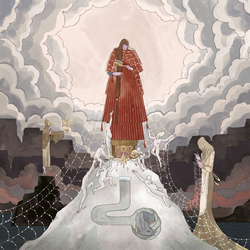 i’ve got to admit that i’ve been simultaneously impatient and anxious at the prospect of a new Purity Ring album. No-one else makes pop that sounds like them – in no small part due to Megan James’ incredible voice – so there’s never enough Purity Ring music to satisfy one’s cravings. Yet 2015’s Another Eternity was so wonderful, so low-key euphoric, that it seemed scarcely credible that they’d be able to live up to that achievement. Womb is magnificent. Its first half is something of a slow burn – although second track ‘Pink Lightning’ is easily one of their greatest songs to date. But its second half is hard to take, a quintet of flawless tracks that attain absolute majesty. What enables Womb to reach even greater heights than their previous work is its arrangements. Where Another Eternity pared things down to the equation voice + beats + bass, here the songs are expanded through vibrant, lush synth textures that enable James’ vocals to soar like never before. The lyrics capture the duo’s usual simultaneous blend of breathless / breathy intimacy, though now James sounds like she’s inhabiting a more fantastical world, perhaps nowhere more so than in ‘Almanac’ where beats are lost altogether, everything floating in a gorgeous airscape. Final track ‘Stardew’ signs off with an expression of pure love delirium, encompassing dew, daydreams and dying stars; this is Purity Ring at their most mature and deeply moving. [CD/Vinyl/Digital]
i’ve got to admit that i’ve been simultaneously impatient and anxious at the prospect of a new Purity Ring album. No-one else makes pop that sounds like them – in no small part due to Megan James’ incredible voice – so there’s never enough Purity Ring music to satisfy one’s cravings. Yet 2015’s Another Eternity was so wonderful, so low-key euphoric, that it seemed scarcely credible that they’d be able to live up to that achievement. Womb is magnificent. Its first half is something of a slow burn – although second track ‘Pink Lightning’ is easily one of their greatest songs to date. But its second half is hard to take, a quintet of flawless tracks that attain absolute majesty. What enables Womb to reach even greater heights than their previous work is its arrangements. Where Another Eternity pared things down to the equation voice + beats + bass, here the songs are expanded through vibrant, lush synth textures that enable James’ vocals to soar like never before. The lyrics capture the duo’s usual simultaneous blend of breathless / breathy intimacy, though now James sounds like she’s inhabiting a more fantastical world, perhaps nowhere more so than in ‘Almanac’ where beats are lost altogether, everything floating in a gorgeous airscape. Final track ‘Stardew’ signs off with an expression of pure love delirium, encompassing dew, daydreams and dying stars; this is Purity Ring at their most mature and deeply moving. [CD/Vinyl/Digital]
14 | Andrew Liles – Entries of Confusion
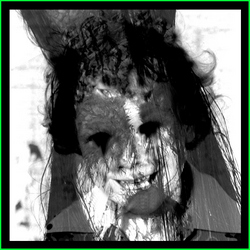 “While [Ozzy Osbourne’s Diary of a Madman …] is clearly the point of inspiration and provided the work’s creative impetus, Entries of Confusion is nonetheless ultimately a homage to vinyl itself […]. Considering what we hear, the fact that nothing extra has been added is remarkable. In the opening couple of minutes we can just about make out a weird muffled pre-echo of voices, and before long the crackle, pop and scratch begin to transform into a curious collection of bell-like chimes. As in some of Liles’ other large-scale works, there’s the immediate sense of entering into a very gradual, long-form process of evolution and development. […] the essence of the work is a balance between poles of noise and silence, and this resolves in highly unexpected ways. Watery and squelching textures arise (part two, ‘Where I Wander’, ends up at a place that sounds positively subaquatic), and the motes of surface crackle often coalesce into complex burblings, or via reverb become magnified into extended juddering walls of impenetrable activity, appearing to teeter at the cusp of possible feedback overload. Equally, there are many occasions when everything reduces almost to nothing, as if we were hearing little more than the equivalent of particles of dust falling onto cotton. […] But while it pulls us in, envelops us even, the music is nonetheless elusive, phantasmagorical, always one step removed. It’s like discovering yourself in a description of someone else’s dream.” (reviewed in December) [Digital]
“While [Ozzy Osbourne’s Diary of a Madman …] is clearly the point of inspiration and provided the work’s creative impetus, Entries of Confusion is nonetheless ultimately a homage to vinyl itself […]. Considering what we hear, the fact that nothing extra has been added is remarkable. In the opening couple of minutes we can just about make out a weird muffled pre-echo of voices, and before long the crackle, pop and scratch begin to transform into a curious collection of bell-like chimes. As in some of Liles’ other large-scale works, there’s the immediate sense of entering into a very gradual, long-form process of evolution and development. […] the essence of the work is a balance between poles of noise and silence, and this resolves in highly unexpected ways. Watery and squelching textures arise (part two, ‘Where I Wander’, ends up at a place that sounds positively subaquatic), and the motes of surface crackle often coalesce into complex burblings, or via reverb become magnified into extended juddering walls of impenetrable activity, appearing to teeter at the cusp of possible feedback overload. Equally, there are many occasions when everything reduces almost to nothing, as if we were hearing little more than the equivalent of particles of dust falling onto cotton. […] But while it pulls us in, envelops us even, the music is nonetheless elusive, phantasmagorical, always one step removed. It’s like discovering yourself in a description of someone else’s dream.” (reviewed in December) [Digital]
13 | Vox Clamantis – Cyrillus Kreek: The Suspended Harp of Babel
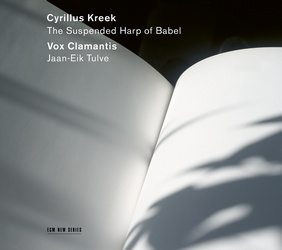 “i simply can’t remember the last time i’ve been so hypnotically drawn deep into an album of choral music. […] Kreek’s harmonies are an intoxicating fusion of convention and caprice. They owe part of this gentle frivolity to Estonian and Swedish folk music, of which Kreek was an avid collector; a nice touch on this album is introducing some the pieces with short bursts of and allusions to their folk origins, most strikingly in Mu süda, ärka üles [Awake, my heart], prefaced by boisterous ensemble playing […] interspersed with the verses of the original folk hymn. Kreek’s subsequent rendition smooths off the most angular edges of the melody but it’s nonetheless clear how much of a debt is owed to the original. However, something of that angularity is preserved in the astonishing harmonic twists that typify so many of Kreek’s settings: suspensions one doesn’t see coming; chords that appear to have slipped into a parallel world of tonality; progressions that suggest jazz and more modern harmonic contrivances. […] to be listening to this disc during such troubling times worldwide gives added impetus not only to the despair but also to the hope captured in these words. When all else is lost, all that remains is […] a faith in the capacity of humanity to keep going and provide mutual support to one another in times of deepest crisis. Cyrillus Kreek’s music – which […] has never sounded better than on this disc – powerfully advocates this, and the need for all of us, though we may feel our voices are broken or lost, to keep singing.” (reviewed in May) [CD/Digital]
“i simply can’t remember the last time i’ve been so hypnotically drawn deep into an album of choral music. […] Kreek’s harmonies are an intoxicating fusion of convention and caprice. They owe part of this gentle frivolity to Estonian and Swedish folk music, of which Kreek was an avid collector; a nice touch on this album is introducing some the pieces with short bursts of and allusions to their folk origins, most strikingly in Mu süda, ärka üles [Awake, my heart], prefaced by boisterous ensemble playing […] interspersed with the verses of the original folk hymn. Kreek’s subsequent rendition smooths off the most angular edges of the melody but it’s nonetheless clear how much of a debt is owed to the original. However, something of that angularity is preserved in the astonishing harmonic twists that typify so many of Kreek’s settings: suspensions one doesn’t see coming; chords that appear to have slipped into a parallel world of tonality; progressions that suggest jazz and more modern harmonic contrivances. […] to be listening to this disc during such troubling times worldwide gives added impetus not only to the despair but also to the hope captured in these words. When all else is lost, all that remains is […] a faith in the capacity of humanity to keep going and provide mutual support to one another in times of deepest crisis. Cyrillus Kreek’s music – which […] has never sounded better than on this disc – powerfully advocates this, and the need for all of us, though we may feel our voices are broken or lost, to keep singing.” (reviewed in May) [CD/Digital]
12 | Joel Lavoie – Souvenir.
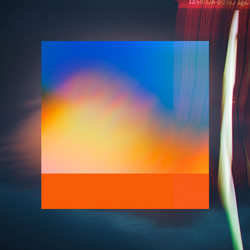 i wasn’t previously aware of Canadian composer Joel Lavoie, but i’ve been returning regularly to his album Souvenir. over the last six months. The three parts bring together synths and field recordings; nothing particularly new about that combination but the results are difficult to categorise, though they tend towards the contemplative. ‘Souvenirs intermittent’ is an ambient-like introduction, deep intoning notes cutting through the imaginary open air, allowed to swell in its second half to an intense dronal zenith. It’s striking, but the second and third parts are yet more impressive. ‘Addendum’ pulls back to a mysterious combination of movement and stasis, always sounding poised to potentially unleash something enormous. What transpires is better than a mere climax: an extended plateau of majesty that i confess i wish lasted much, much longer than its few minutes – i think i could be borne aloft on beauty like this forevermore. ‘Marche irréfléchie’ pulls back again, now descending into deeper climes; again its habitat is harmonically limited, but the range of details that emerge and recede within, and its varying dynamic shape, are marvellous to behold. Souvenir. is a superb demonstration of simplicity and complexity working together to create something that sounds almost totally different on each new listening. [Digital]
i wasn’t previously aware of Canadian composer Joel Lavoie, but i’ve been returning regularly to his album Souvenir. over the last six months. The three parts bring together synths and field recordings; nothing particularly new about that combination but the results are difficult to categorise, though they tend towards the contemplative. ‘Souvenirs intermittent’ is an ambient-like introduction, deep intoning notes cutting through the imaginary open air, allowed to swell in its second half to an intense dronal zenith. It’s striking, but the second and third parts are yet more impressive. ‘Addendum’ pulls back to a mysterious combination of movement and stasis, always sounding poised to potentially unleash something enormous. What transpires is better than a mere climax: an extended plateau of majesty that i confess i wish lasted much, much longer than its few minutes – i think i could be borne aloft on beauty like this forevermore. ‘Marche irréfléchie’ pulls back again, now descending into deeper climes; again its habitat is harmonically limited, but the range of details that emerge and recede within, and its varying dynamic shape, are marvellous to behold. Souvenir. is a superb demonstration of simplicity and complexity working together to create something that sounds almost totally different on each new listening. [Digital]
11 | Rebecca Saunders – Musica Viva Vol. 35
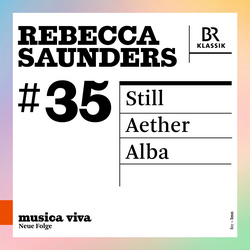 It’s probable that i’ve written more about Rebecca Saunders’ music than any other composer. Certainly, i’ve explored all three of the works featured on this disc previously, primarily as part of my 2018 Lent Series. For that reason i won’t get into the nitty gritty about what’s going on in the pieces here, but suffice it to say that these performances entirely live up to the remarkable intricacies of Saunders’ material. In the case of Still and Alba (concertos for violin and trumpet, performed by their respective dedicatees Carolin Widmann and Marco Blaauw), it’s easy to feel stunned and overwhelmed due to how vivid they are, seemingly playing out just inches from our ears. While avoiding exaggeration, these performances reveal the works’ range of violence and ethereality with incredible clarity. Carl Rosman and Richard Haynes’ rendition of Aether is a complete contrast, a hypnotic, complex dialogue that comes to feel akin to a mobile, as if its phrases could be placed in any order, and which over time seems increasingly abstracted, ultimately like two related sound objects moving carefully around each other. It’s great to see these three important works by Saunders finally given such authoritative and literally amazing recordings as part of the excellent ongoing Musica Viva series. [CD/Digital]
It’s probable that i’ve written more about Rebecca Saunders’ music than any other composer. Certainly, i’ve explored all three of the works featured on this disc previously, primarily as part of my 2018 Lent Series. For that reason i won’t get into the nitty gritty about what’s going on in the pieces here, but suffice it to say that these performances entirely live up to the remarkable intricacies of Saunders’ material. In the case of Still and Alba (concertos for violin and trumpet, performed by their respective dedicatees Carolin Widmann and Marco Blaauw), it’s easy to feel stunned and overwhelmed due to how vivid they are, seemingly playing out just inches from our ears. While avoiding exaggeration, these performances reveal the works’ range of violence and ethereality with incredible clarity. Carl Rosman and Richard Haynes’ rendition of Aether is a complete contrast, a hypnotic, complex dialogue that comes to feel akin to a mobile, as if its phrases could be placed in any order, and which over time seems increasingly abstracted, ultimately like two related sound objects moving carefully around each other. It’s great to see these three important works by Saunders finally given such authoritative and literally amazing recordings as part of the excellent ongoing Musica Viva series. [CD/Digital]
10 | Fassine – Forge
 i’m continually surprised and humbled at the quantity of great music that i’ve not yet encountered. One of my most exciting discoveries this year is London trio Fassine, who i was shocked to learn have actually been around since 2016 (i’m going to have to write something more in-depth about them in due course, as their previous albums Dialectik and Gourami are both excellent). Their latest release Forge is hands down the best pop i’ve heard all year, primarily because, despite first appearances that might suggest otherwise, their songs go a long way to unpicking and reinventing the medium. Take ‘Max’, a pseudo-song essentially bereft of either verse or chorus, built on a pounding, cycling riff upon which ideas are piled and removed at leisure, like a strange electronic chaconne. ‘Hellsto’ is similar, focused on an ongoing melody with breathy interjections from left and right, without any need even to allude to the conventional structures (strictures?) of pop. ‘Everyone Is Guilty To Me’ finds singer Sarah Palmer’s voice augmented to a cluster of close proximity whispers while its bass and guitar trappings seem to be in a perpetual state of tilting sideways. More off-piste is instrumental track ‘Migraine’, a string meditation that feels increasingly urgent, as if searching for a (possibly analgesic) solution, arriving at a bright, shining conclusion caked in noise that could be read as positive or negative. Forge is the very best kind of pop, prepared to question the very fundamentals of what supposedly makes itself tick. [CD/Vinyl/Digital]
i’m continually surprised and humbled at the quantity of great music that i’ve not yet encountered. One of my most exciting discoveries this year is London trio Fassine, who i was shocked to learn have actually been around since 2016 (i’m going to have to write something more in-depth about them in due course, as their previous albums Dialectik and Gourami are both excellent). Their latest release Forge is hands down the best pop i’ve heard all year, primarily because, despite first appearances that might suggest otherwise, their songs go a long way to unpicking and reinventing the medium. Take ‘Max’, a pseudo-song essentially bereft of either verse or chorus, built on a pounding, cycling riff upon which ideas are piled and removed at leisure, like a strange electronic chaconne. ‘Hellsto’ is similar, focused on an ongoing melody with breathy interjections from left and right, without any need even to allude to the conventional structures (strictures?) of pop. ‘Everyone Is Guilty To Me’ finds singer Sarah Palmer’s voice augmented to a cluster of close proximity whispers while its bass and guitar trappings seem to be in a perpetual state of tilting sideways. More off-piste is instrumental track ‘Migraine’, a string meditation that feels increasingly urgent, as if searching for a (possibly analgesic) solution, arriving at a bright, shining conclusion caked in noise that could be read as positive or negative. Forge is the very best kind of pop, prepared to question the very fundamentals of what supposedly makes itself tick. [CD/Vinyl/Digital]
9 | Adam Janota Bzowski – Saint Maud (Original Motion Picture Soundtrack)
 “Considering the scale and power of this film, it’s to Bzowski’s credit that he’s taken such a restrained approach in his music. […] Bzowski’s approach is a world away from the attitude that’s become stubbornly and stupidly entrenched in the minds of so many film (and TV) composers, convinced that the score must permeate each and every moment of the movie, like a kind of musical cancer. Instead, Bzowski doesn’t so much create an aural context for the on-screen narrative as provide a psychological parallel of it. […] One of the main areas where this manifests is in its contrasts – or, more accurately, collisions. Musical ideas break off and interrupt each other, sometimes with considerable force, sometimes effortlessly. It gives the impression of multiple strands of understanding sitting in stark contrast and conflict with one another, a confused train of thought, and above all the desperate need – and, at times, inability – to subjugate or repress more painful perceptions of truth in favour of a less challenging, anodyne fiction. […] Another source of friction comes from abrupt tussling tilts between the kind of nebulous material i’ve described and sudden outbreaks of marshalled regularity, coming across as fittingly vain attempts to introduce clarity and certainty to what is otherwise ambiguous and erratic. […] Melancholic, wistful, plaintive, even somewhat baffled, [closing track, ‘Saint Maud’ is] the one time when Bzowski’s score leaves Maud’s head, reflecting on the events that have taken place. […] Once again, one of the most outstanding movies of the year has been matched with one of the best movie scores.” (reviewed in December) [Digital]
“Considering the scale and power of this film, it’s to Bzowski’s credit that he’s taken such a restrained approach in his music. […] Bzowski’s approach is a world away from the attitude that’s become stubbornly and stupidly entrenched in the minds of so many film (and TV) composers, convinced that the score must permeate each and every moment of the movie, like a kind of musical cancer. Instead, Bzowski doesn’t so much create an aural context for the on-screen narrative as provide a psychological parallel of it. […] One of the main areas where this manifests is in its contrasts – or, more accurately, collisions. Musical ideas break off and interrupt each other, sometimes with considerable force, sometimes effortlessly. It gives the impression of multiple strands of understanding sitting in stark contrast and conflict with one another, a confused train of thought, and above all the desperate need – and, at times, inability – to subjugate or repress more painful perceptions of truth in favour of a less challenging, anodyne fiction. […] Another source of friction comes from abrupt tussling tilts between the kind of nebulous material i’ve described and sudden outbreaks of marshalled regularity, coming across as fittingly vain attempts to introduce clarity and certainty to what is otherwise ambiguous and erratic. […] Melancholic, wistful, plaintive, even somewhat baffled, [closing track, ‘Saint Maud’ is] the one time when Bzowski’s score leaves Maud’s head, reflecting on the events that have taken place. […] Once again, one of the most outstanding movies of the year has been matched with one of the best movie scores.” (reviewed in December) [Digital]
8 | Gunnar Geisse – TRIPTYCH
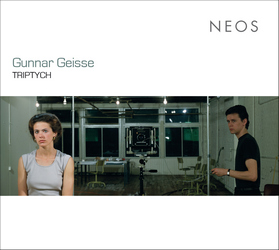 At the heart of both works on Triptych is a palpable, wrangling tension between notions of real and unreal, in terms of both the actual musical sounds we hear as well as the underlying instincts that put these sounds where and when they occur. We can practically hear this tension working itself out in the opening minutes of the Piano Concerto. Pitches tentatively emerge from Geisse’s imaginary orchestra – almost like tuning up before a performance – followed by an extended sequence where it’s easy to believe that we’re hearing the instruments working out in real time how to perform together, steered and guided by the piano. The uncanny effect created by Geisse’s artificial orchestra brings to mind the heavily-stratified, impossible textures of Paul Dolden; the piano could hardly be more different: nimble to the point of utterly superhuman levels of virtuosity, evoking the transcendent player piano studies of Conlon Nancarrow. In rhythm changes Geisse ramps things up to extremes. On the one hand, there are times when it seems as if the music is now entirely governed by artificial intelligence, crazily sputtering and glitching as if a million volts of electricity were being channelled through the machine’s circuits. Yet equally there’s an abiding sense of selectivity at play, evidence of a human mind determining – both at the moment of improvisation and in retrospect – exactly how and when to cut and splice the fevered torrent of material. When we listen to Gunnar Geisse’s Triptych, we see and hear what we initially imagine to be real; we experience a liminal (un)reality. (reviewed in November) [CD]
At the heart of both works on Triptych is a palpable, wrangling tension between notions of real and unreal, in terms of both the actual musical sounds we hear as well as the underlying instincts that put these sounds where and when they occur. We can practically hear this tension working itself out in the opening minutes of the Piano Concerto. Pitches tentatively emerge from Geisse’s imaginary orchestra – almost like tuning up before a performance – followed by an extended sequence where it’s easy to believe that we’re hearing the instruments working out in real time how to perform together, steered and guided by the piano. The uncanny effect created by Geisse’s artificial orchestra brings to mind the heavily-stratified, impossible textures of Paul Dolden; the piano could hardly be more different: nimble to the point of utterly superhuman levels of virtuosity, evoking the transcendent player piano studies of Conlon Nancarrow. In rhythm changes Geisse ramps things up to extremes. On the one hand, there are times when it seems as if the music is now entirely governed by artificial intelligence, crazily sputtering and glitching as if a million volts of electricity were being channelled through the machine’s circuits. Yet equally there’s an abiding sense of selectivity at play, evidence of a human mind determining – both at the moment of improvisation and in retrospect – exactly how and when to cut and splice the fevered torrent of material. When we listen to Gunnar Geisse’s Triptych, we see and hear what we initially imagine to be real; we experience a liminal (un)reality. (reviewed in November) [CD]
7 | various artists – Lament
 “The first part [of Arne Nordheim’s Aurora], setting the Psalm, is focused on the self, Nordheim matching this through the clarity and homogeneity of his choral writing. The second part, setting Dante, is focused on something altogether more transcendent, the choir now becoming more fragmented, sometimes vague, sometimes forceful and/or lyrical. […] By contrast, Lars Petter Hagen‘s Lament is directed downwards, conveying stark melancholy. […] The words are articulated as a kind of stretched out vocalise […], forming a generally restrained keening, abstract but deeply reflective. […] The musical language is consonant but complex, varying in terms of the clarity of its tonality. The overall effect is stunningly beautiful – not so much excruciating as exquisite pain, a perfect encapsulation of acute bittersweetness. Nil Henrik Asheim‘s Muohta comprises 18 short sections, each titled after, inspired by and seeking (in part) to depict one of the hundreds of words in the Sámi language that describe different forms of snow. […] In section 6, rádnu, we hear a parallel for the traces of animal trails in its network of sonic impressions, largely made up of whispered or indistinct notes and tremolos. […] Asheim taps into the playfulness implied in the skiing-oriented doavdnji by making section 9 an overlapping sequence of downhill sliding and scurrying, peppered with exuberant wild shouts. […] the work is a by turns delightful and disconcerting exploration of both the quiet and the uproarious majesty of nature, its 18 short studies acting like windows into a series of adjacent worlds, each one akin to a miniature snowglobe that Asheim shakes up and briefly watches before moving on to the next.” (reviewed in November) [CD/Digital]
“The first part [of Arne Nordheim’s Aurora], setting the Psalm, is focused on the self, Nordheim matching this through the clarity and homogeneity of his choral writing. The second part, setting Dante, is focused on something altogether more transcendent, the choir now becoming more fragmented, sometimes vague, sometimes forceful and/or lyrical. […] By contrast, Lars Petter Hagen‘s Lament is directed downwards, conveying stark melancholy. […] The words are articulated as a kind of stretched out vocalise […], forming a generally restrained keening, abstract but deeply reflective. […] The musical language is consonant but complex, varying in terms of the clarity of its tonality. The overall effect is stunningly beautiful – not so much excruciating as exquisite pain, a perfect encapsulation of acute bittersweetness. Nil Henrik Asheim‘s Muohta comprises 18 short sections, each titled after, inspired by and seeking (in part) to depict one of the hundreds of words in the Sámi language that describe different forms of snow. […] In section 6, rádnu, we hear a parallel for the traces of animal trails in its network of sonic impressions, largely made up of whispered or indistinct notes and tremolos. […] Asheim taps into the playfulness implied in the skiing-oriented doavdnji by making section 9 an overlapping sequence of downhill sliding and scurrying, peppered with exuberant wild shouts. […] the work is a by turns delightful and disconcerting exploration of both the quiet and the uproarious majesty of nature, its 18 short studies acting like windows into a series of adjacent worlds, each one akin to a miniature snowglobe that Asheim shakes up and briefly watches before moving on to the next.” (reviewed in November) [CD/Digital]
6 | Nokuit – Live at Cafe OTO
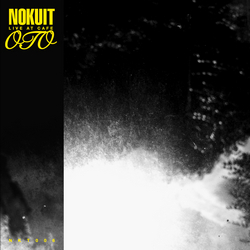 “The music emerges out of Cafe OTO’s murmuring ambiance into a mess of squeaky friction and unintelligible speech, a disorienting but engaging opening that soon finds stability in a powerful 2-note (major third) bass oscillation. Even as early as this, though, there’s an ominous tinge to this stability, and it’s hard to say whether it’s a relief or not to return to the more confusing melée of elements that eventually causes it to break down, channelled through a forceful column of noise. […] The latter half of the performance is just as conflicted. Light is lost in a lengthy tract of hovering vagueness peppered unsettlingly with loud calls, vaguely militaristic noises and distant traces of angelic singing. Though highly restrained, there’s nonetheless something apocalyptic about it, which makes its hovering nature all the more troubling, like a diaphanous dark veil hanging over the skies, while the crunching regularity of marching feet passes by. […] Depending on your perspective, the closing minutes are a return to a sense of imposing threat or an indication that this recurrence of whatever-it-is is actually a kind of landmark, the oscillations (all of them) acting like varying ritornellos around which we can orient ourselves. To say i’m not sure brings me back to […] the fundamental ambiguity that runs throughout Nokuit’s performance and makes it the dazzlingly vivid, disquieting and energising experience that it is. And quite apart from all this, it’s a reminder of the wonders that await us when we can get back to the glory of live performances once again.” (reviewed in May) [Digital]
“The music emerges out of Cafe OTO’s murmuring ambiance into a mess of squeaky friction and unintelligible speech, a disorienting but engaging opening that soon finds stability in a powerful 2-note (major third) bass oscillation. Even as early as this, though, there’s an ominous tinge to this stability, and it’s hard to say whether it’s a relief or not to return to the more confusing melée of elements that eventually causes it to break down, channelled through a forceful column of noise. […] The latter half of the performance is just as conflicted. Light is lost in a lengthy tract of hovering vagueness peppered unsettlingly with loud calls, vaguely militaristic noises and distant traces of angelic singing. Though highly restrained, there’s nonetheless something apocalyptic about it, which makes its hovering nature all the more troubling, like a diaphanous dark veil hanging over the skies, while the crunching regularity of marching feet passes by. […] Depending on your perspective, the closing minutes are a return to a sense of imposing threat or an indication that this recurrence of whatever-it-is is actually a kind of landmark, the oscillations (all of them) acting like varying ritornellos around which we can orient ourselves. To say i’m not sure brings me back to […] the fundamental ambiguity that runs throughout Nokuit’s performance and makes it the dazzlingly vivid, disquieting and energising experience that it is. And quite apart from all this, it’s a reminder of the wonders that await us when we can get back to the glory of live performances once again.” (reviewed in May) [Digital]
5 | Catherine Lamb – Prisma Interius VII & VIII
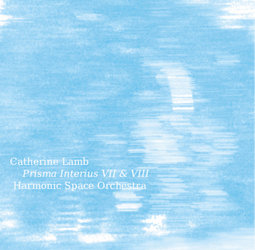 “Prisma Interius VII is a duet for violin and ‘secondary rainbow synthesizer’, the latter being the name for a device “that uses the live environment outside the performance space as a noise generator for basic subtractive synthesis.” […] The contribution of this instrument, as in all the Prisma Interius works, is extremely subtle but, perhaps precisely because of that subtlety, becomes the key element that gives the music real electricity and excitement. The violin’s material is slow and considered, positioning a variety of sustained tones in close microtonal proximity to each other, while the synthesizer initially sounds like a far-off continuous marimba roll. Over time, though, both parts grow in complexity, both inwardly and outwardly. […] Harmony plays a much more complex role in Prisma Interius VIII due to its greater number of players […] Though behaviourally similar, the way the material alludes to notions of harmonic movement […] leads to a fascinating push-pull of implied (non-)progressions. This defiance of expectations extends to the sound palette of the ensemble, which often becomes timbrally neutral, a collection of anonymous slow tones largely devoid of strong instrumental origins. […] The combination of all this with the permanently inscrutable synthesizers here makes for true magic. Its middle- or background presence doesn’t simply act as an atmosphere but as a kind of glimmering light source, bestowing on the instruments a sheen or patina that, like everything else, is in continual flux. Thus, in ways that are hard to qualify Prisma Interius VIII becomes strangely moving, stunningly beautiful, achingly fragile…” (reviewed in October) [CD/Digital]
“Prisma Interius VII is a duet for violin and ‘secondary rainbow synthesizer’, the latter being the name for a device “that uses the live environment outside the performance space as a noise generator for basic subtractive synthesis.” […] The contribution of this instrument, as in all the Prisma Interius works, is extremely subtle but, perhaps precisely because of that subtlety, becomes the key element that gives the music real electricity and excitement. The violin’s material is slow and considered, positioning a variety of sustained tones in close microtonal proximity to each other, while the synthesizer initially sounds like a far-off continuous marimba roll. Over time, though, both parts grow in complexity, both inwardly and outwardly. […] Harmony plays a much more complex role in Prisma Interius VIII due to its greater number of players […] Though behaviourally similar, the way the material alludes to notions of harmonic movement […] leads to a fascinating push-pull of implied (non-)progressions. This defiance of expectations extends to the sound palette of the ensemble, which often becomes timbrally neutral, a collection of anonymous slow tones largely devoid of strong instrumental origins. […] The combination of all this with the permanently inscrutable synthesizers here makes for true magic. Its middle- or background presence doesn’t simply act as an atmosphere but as a kind of glimmering light source, bestowing on the instruments a sheen or patina that, like everything else, is in continual flux. Thus, in ways that are hard to qualify Prisma Interius VIII becomes strangely moving, stunningly beautiful, achingly fragile…” (reviewed in October) [CD/Digital]
4 | Katie Gately – Loom
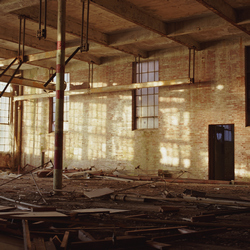 Extending further the uncompromising vision demonstrated on her previous two albums (2013’s Katie Gately and 2016’s Color), Gately’s latest album Loom speaks like a song cycle sent back in time from the future. Voice and electronics don’t merely complement each other but sound symbiotic, fundamentally fused. A recurring feature of these songs is a tension caused by regularity and freedom, or conflicting attitudes. For example, following a collection of connected vocal tangents, ‘Allay’ clarifies into a level-headed anthem of sorts, the solemnity of its pace undermined by the swooping caprice of its melody. A similar mismatch is explored in ‘Waltz’, where the pulse doesn’t so much indicate dance as something almost funereal, though Gately’s voice clearly has other ideas. The apogee of this tension, which ultimately breaks and leads to cooperation, comes in ‘Bracer’, where words and music jostle beyond friction to a place of sublime ebb and flow, charting a path that leads to both climactic enormity and more mellow meandering. Most exciting are the instances where the music’s sedate nature is gradually liberated, perhaps nowhere more exhilaratingly than in ‘Tower’, which starts out sounding not unlike ‘Waltz’ and ends up as thumping euphoria. The fact that the final two tracks feature no beats whatsoever seems appropriate; Loom ultimately transcends pulse and metre to inhabit a new floating reality. [CD/Vinyl/Digital]
Extending further the uncompromising vision demonstrated on her previous two albums (2013’s Katie Gately and 2016’s Color), Gately’s latest album Loom speaks like a song cycle sent back in time from the future. Voice and electronics don’t merely complement each other but sound symbiotic, fundamentally fused. A recurring feature of these songs is a tension caused by regularity and freedom, or conflicting attitudes. For example, following a collection of connected vocal tangents, ‘Allay’ clarifies into a level-headed anthem of sorts, the solemnity of its pace undermined by the swooping caprice of its melody. A similar mismatch is explored in ‘Waltz’, where the pulse doesn’t so much indicate dance as something almost funereal, though Gately’s voice clearly has other ideas. The apogee of this tension, which ultimately breaks and leads to cooperation, comes in ‘Bracer’, where words and music jostle beyond friction to a place of sublime ebb and flow, charting a path that leads to both climactic enormity and more mellow meandering. Most exciting are the instances where the music’s sedate nature is gradually liberated, perhaps nowhere more exhilaratingly than in ‘Tower’, which starts out sounding not unlike ‘Waltz’ and ends up as thumping euphoria. The fact that the final two tracks feature no beats whatsoever seems appropriate; Loom ultimately transcends pulse and metre to inhabit a new floating reality. [CD/Vinyl/Digital]
3 | irr. app. (ext.) – Nocturnal Emissaries
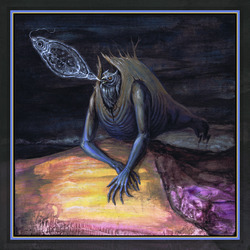 The effect of listening to irr. app. (ext.) (aka US artist Matthew Waldron) is similar to watching Aleksei German’s incredible 2013 film Hard to be a God. We’re thrown into an immersive yet completely bewildering and, frankly, mind-boggling world in which we’re forced to try to make sense of the unexplained complexities going on in front of us. As such, the experience feels, literally, alienating, yet Waldron’s work (like German’s film) is rooted in sounds that are deeply familiar. In this respect, i’ve come to think of Waldron’s music as a kind of ‘extreme acousmatic’ music, in the way that it uses a sound palette that continually hovers around the cusp of identifiability from which are constructed fantastically absurd pseudo-narratives. Nocturnal Emissaries is one of the most exhilarating irr. app. (ext.) albums of recent years, precisely because, in part at least, it seems to be at first so staggeringly complex, filled with manifold elements that constantly intermingle, evoking a myriad real world objects and creatures. i mentioned narrative, but Waldron allows his elements to jostle at length without overtly seeking to coerce that narrative, avoiding frenetic or bombastic tropes and clichés. Learning where one element ends and another begins, and which of them predominate or might possibly be catalytic is just one of the ways that make being immersed within the discombobulating beauty of Nocturnal Emissaries such a deeply rewarding experience. After this, almost anything else just sounds hopelessly ordinary. [Digital]
The effect of listening to irr. app. (ext.) (aka US artist Matthew Waldron) is similar to watching Aleksei German’s incredible 2013 film Hard to be a God. We’re thrown into an immersive yet completely bewildering and, frankly, mind-boggling world in which we’re forced to try to make sense of the unexplained complexities going on in front of us. As such, the experience feels, literally, alienating, yet Waldron’s work (like German’s film) is rooted in sounds that are deeply familiar. In this respect, i’ve come to think of Waldron’s music as a kind of ‘extreme acousmatic’ music, in the way that it uses a sound palette that continually hovers around the cusp of identifiability from which are constructed fantastically absurd pseudo-narratives. Nocturnal Emissaries is one of the most exhilarating irr. app. (ext.) albums of recent years, precisely because, in part at least, it seems to be at first so staggeringly complex, filled with manifold elements that constantly intermingle, evoking a myriad real world objects and creatures. i mentioned narrative, but Waldron allows his elements to jostle at length without overtly seeking to coerce that narrative, avoiding frenetic or bombastic tropes and clichés. Learning where one element ends and another begins, and which of them predominate or might possibly be catalytic is just one of the ways that make being immersed within the discombobulating beauty of Nocturnal Emissaries such a deeply rewarding experience. After this, almost anything else just sounds hopelessly ordinary. [Digital]
2 | Clara Iannotta – Earthing
 “i’m sure this isn’t what the composer intended, but with each new listen to Earthing i’ve come to hear it more and more as a form of symphony. This perception has clearly suggested itself because of how fundamentally connected and similar these four pieces are. […] Earthing avoids polarities, and one way of elaborating that ostensibly simple (and perhaps sweeping) statement would be to say that Iannotta’s music has a certain kind of uniformity to it. It’s a complex homogeneity, where, in the same way as the four individual works combine to form a bigger whole, the four members of the quartet also become inseparable and often indistinguishable from one another. Yet that homogeneity is far too detailed to be summarised simply as ‘textural’. […] The reason the four pieces on Earthing suggest a refusal to embrace polarised musical materials – rather than simply a shrunk-down manifestation of them – is because they seem to be less about the emergence of their details than about an ongoing process of quietly turbulent creation. In other words, about the opposite of polarity: the liminality of sound objects; the way one thing evolves, transforms, bleeds, burns into another; the inseparability of sonic shapes and the blurring of their timbral ‘edges’. […] It’s very difficult to articulate just how wondrous and how spell-binding it all is. This is music at its most organic and (r)evolutionary: it fundamentally questions conventions of identity and contrast, narrative and drama, structure and form, individual and ensemble; it challenges the definition of a musical idea, the integrity of timbre and even the concept of music itself.” (reviewed in November) [CD/Digital]
“i’m sure this isn’t what the composer intended, but with each new listen to Earthing i’ve come to hear it more and more as a form of symphony. This perception has clearly suggested itself because of how fundamentally connected and similar these four pieces are. […] Earthing avoids polarities, and one way of elaborating that ostensibly simple (and perhaps sweeping) statement would be to say that Iannotta’s music has a certain kind of uniformity to it. It’s a complex homogeneity, where, in the same way as the four individual works combine to form a bigger whole, the four members of the quartet also become inseparable and often indistinguishable from one another. Yet that homogeneity is far too detailed to be summarised simply as ‘textural’. […] The reason the four pieces on Earthing suggest a refusal to embrace polarised musical materials – rather than simply a shrunk-down manifestation of them – is because they seem to be less about the emergence of their details than about an ongoing process of quietly turbulent creation. In other words, about the opposite of polarity: the liminality of sound objects; the way one thing evolves, transforms, bleeds, burns into another; the inseparability of sonic shapes and the blurring of their timbral ‘edges’. […] It’s very difficult to articulate just how wondrous and how spell-binding it all is. This is music at its most organic and (r)evolutionary: it fundamentally questions conventions of identity and contrast, narrative and drama, structure and form, individual and ensemble; it challenges the definition of a musical idea, the integrity of timbre and even the concept of music itself.” (reviewed in November) [CD/Digital]

1 | Witch ‘n’ Monk – Witch ‘n’ Monk
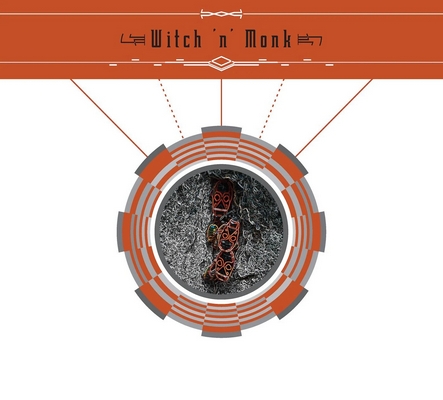 Context is everything. Perhaps it was inevitable, considering the appalling, unavoidably invasive ways in which 2020 has made its presence felt in all aspects of our daily lives, that this would extend to the way we listen and respond to music. i don’t usually approach music with desires – and certainly not needs – that i want or expect to be fulfilled. But i can’t help feeling whether, this year, i have at times found (rather than gone looking for) in music something that has made 2020 feel more bearable, and restored (or at least been a reminder of) some of the joie de vivre that otherwise seems to have drained away. Nothing, and no-one, has done that more demonstratively than the self-titled album from Witch ‘n’ Monk.
Context is everything. Perhaps it was inevitable, considering the appalling, unavoidably invasive ways in which 2020 has made its presence felt in all aspects of our daily lives, that this would extend to the way we listen and respond to music. i don’t usually approach music with desires – and certainly not needs – that i want or expect to be fulfilled. But i can’t help feeling whether, this year, i have at times found (rather than gone looking for) in music something that has made 2020 feel more bearable, and restored (or at least been a reminder of) some of the joie de vivre that otherwise seems to have drained away. Nothing, and no-one, has done that more demonstratively than the self-titled album from Witch ‘n’ Monk.
Previously known as Bitch ‘n’ Monk, the dualism in Heidi Heidelberg and Mauricio Velasierra’s nom de guerre used to suggest a kind of nasty and nice dichotomy. This is certainly what prevails on their first album, the equally remarkable We Are Peering Over, where the beauty and simplicity of Heidelberg’s vocal melodies are hurled into the midst of gritty, hard-edged, uncompromising arrangements and textures, within tempi and structures that seem to be discovering and rejecting themselves in real time. The transition to Witch ‘n’ Monk (and this is their first release under that name) connotes a subtle shift in contrast, not merely nasty and nice but now evoking more rarefied realms of outlook, attitude and belief, a combination of magic and faith, mischief and austerity, and a willingness to embrace both the obscurity of the dark and the purity of the light.
The fantastical result of all this brings to mind one of the alien species in Douglas Adams’ Hitchhiker’s Guide to the Galaxy: the Haggunenons, a “chronically unstable” species that genetically evolves at top speed, changing their entire form in moments. Likewise, a typical Witch ‘n’ Monk song undergoes multiple radical transformations of form, appearance and style on the fly, adopting and discarding ideas ad libitum, the prospect of coherence resting on a whim (Witch) and a prayer (Monk). ‘Self’, for example, sets out over a rapid bassline and flute twitterings, which in conjunction with its tune suggests an exuberant folk song; barely 60 seconds in, it shifts sideways into a kind of oblique rock, replete with faux electric guitar and more aggressive vocals. Another minute on, and everything melts, slip-sliding off and down, briefly touching on a flute and beats episode tinged with electronica before, yet another minute later, re-emerging as a light lyrical song to the chilled out strummings of a charango, culminating in a dance that, at the very end, spontaneously combusts.
Closing track ‘Gualchován’ is similarly erratic. Shambling beats and small repeating phrases (faintly redolent of OY) soon clarify to parallel floating vocal and flute lines. Whereupon they’re left hanging in space; anywhere else this would be an interlude, but here it’s an end in itself. “How far we’ve come” sings Heidelberg, and as if to confirm that assessment the song transforms to just her voice with buzzing dronal flute notes as accompaniment, both eventually spiralling upward.
As is perhaps clear from these descriptions, the nature of Heidelberg’s and Velasierra’s interactions is such that her voice and his flute are like familiars of each other – they travel side by side, either speaking together or around one another. In ‘Pagan’s Storm and the Sea Ballad’ they speak in parallel, the flute a permanent line of free-wheeling counterpoint beside the melody, often allowed lengthy periods on its own, occasionally swamped when Heidelberg lets rip with wild ululations that seem to fracture her voice into a choir of clones. At least, that’s the relationship until halfway through when, once again, the song teeters over into a strange alternate reality where beats and bass no longer exist, high vocalise reverberating over dull thrummed chords, the flute now seemingly lost. Similar stratospheric melodies appear in ‘The Cage’, angularly flying over faintly middle eastern trappings, like an aria from an off-kilter opera. Impressions of stability are undermined by the shuffling manner of its underlying pulse, somehow managing to sound regular and irregular at the same time. “Now I’m finding my voice in this cage”, sings Heidelberg, a phrase that’s just as pertinent to the album as a whole, but which, as i’ve indicated, is a voice characterised more by states of change than a single, consistent definition – or, perhaps, a voice defined by its need to redefine conventional musical ideas. Certainly, ‘The Cage’ could only in the loosest sense of the word be called a ‘song’: with the makings of a sentiment and the bare bones of a melody, it’s not unlike a bird song reduced in pitch and then crudely straightened out to form the contorted contours of the semblance of a tune.
One of the most radical demonstrations of Witch ‘n’ Monk’s playfulness with ideas comes in ‘The Gathering’. A shuffling, scraping beat and the flute out of tune with itself (both played and sung through) Bold opening gestures or the main idea? It settles into a more elaborate multiplicity of flute and voice meandering and twiddling over ongoing beats and bass and percussion – yet all the time it begs another question: are any of these elements actually connected, or just coexisting? It only makes the cheerfulness of the ‘The Gathering’ feel more authentic and uplifting, concerned more with expressing something whimsical and elated rather than seeking to make everything neatly and orderly coalesce.
And this brings me back to where i started, to 2020 and the ways that music can provide something that makes life better, or at least lessens its pervading gloom. i don’t think anything i’ve listened to this year has made me smile more broadly, or even laugh more loudly, than Witch ‘n’ Monk. At times of crisis music can seem such a superfluous activity, such a trivial thing beside the enormity of struggle and suffering. Personally, i’ve found (and continue to find) the experience of the pandemic to be an inspirational vacuum, making it inordinately difficult to be – or even to justify being – creative. Witch ‘n’ Monk has been the most delirious corrective to this, a reminder of the ways in which music can leap and bound and fly, can tease us out of whatever shells we find ourselves curling up within, whether for safety or out of fear. It’s an album that invites us to remember the necessity, alongside the seriousness of life, for fun, for play and for happiness. There’s been so much talk this year of what “the new normal” will be once Covid has been tamed and, perhaps, vanquished. It’s a phrase that speaks of a need to re-evaluate conventions and traditions, reinvent outdated past norms. i think i hear in Witch ‘n’ Monk something like a musical equivalent of this, a radical overhaul and redefining of notions of song, melody, accompaniment, gesture, idea, unity, verse, chorus, structure, all redefined here simply in terms of a fanciful, fickle, short-term subjective ‘rightness’ than according to any form of fixed, long-term objective ‘rules’.
In such a flawless whirlwind of exuberance as this it’s impossible to pick favourites, but penultimate track ‘Outchant’ is especially striking – and possibly the most insanely ecstatic and amusing song on the album. A mess of flute, voice and guitar chirps – like a trio of pointillist passerines – each seem to be vying for priority; pushed on through a wonky middle sequence underpinned by heavy bass, all three emerge, now unified, in a marvellously ludicrous finale seemingly made from jazzy lounge music from the ’50s put through an avant-garde prism. Witch ‘n’ Monk is music of, and very much for, our time – and, i’ve no doubt, for the future too. A balm and just plain barmy in equal measure, its uniquely mad effervescence makes it not just the best but maybe also the most valuable and necessary album of 2020.
